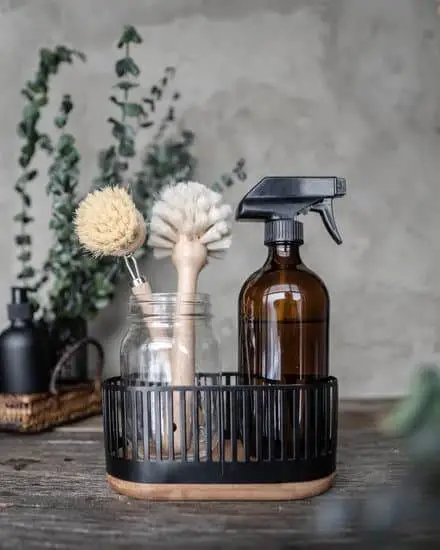Aromatherapy Epsom salt has gained popularity in recent years as a natural remedy for relaxation and stress relief. In this article, we will explore the art of creating your own aromatherapy Epsom salt at home, along with its benefits and various uses. If you’ve ever wondered how to make aromatherapy Epsom salt, this comprehensive guide will walk you through the process step by step.
Epsom salt, also known as magnesium sulfate, is a mineral compound that has been used for centuries for its therapeutic properties. When combined with the power of essential oils, aromatherapy Epsom salt can provide even greater benefits. The resulting mixture not only relaxes the body but also offers a range of soothing scents to enhance your overall well-being.
Whether you’re seeking relief from muscle soreness, stress reduction, or simply a way to unwind after a long day, aromatherapy Epsom salt can be a valuable addition to your self-care routine. With a deeper understanding of its science and application, you can harness the full potential of this holistic wellness practice.
The Science Behind Aromatherapy Epsom Salt
How Epsom Salt Works in the Body
Epsom salt, also known as magnesium sulfate, is a mineral compound that has been used for centuries for its various health benefits. When dissolved in water, it releases magnesium and sulfate ions that can be absorbed through the skin.
Magnesium plays a crucial role in numerous bodily functions, including muscle and nerve function, energy production, and the regulation of blood sugar and blood pressure. Sulfate helps flush out toxins from the body and is essential for the formation of joint proteins and brain tissue.
The Role of Aromatherapy in Enhancing the Effects of Epsom Salt
Aromatherapy involves the use of essential oils to promote physical and psychological well-being. When combined with Epsom salt, essential oils can enhance its therapeutic effects by providing additional benefits such as relaxation, stress relief, and muscle recovery. The scents of these natural oils can also have a powerful impact on mood and emotions, further contributing to the overall experience of using aromatherapy Epsom salt.
Choosing the Right Essential Oils for Aromatherapy Epsom Salt
When making aromatherapy Epsom salt at home, it’s important to choose essential oils that complement the desired therapeutic effects. For example, lavender oil is well-known for its calming properties, making it an excellent choice for relaxation blends. Peppermint oil can be invigorating and help relieve muscle tension after exercise. Additionally, citrus oils like lemon or grapefruit can uplift mood and reduce stress. Experimenting with different essential oil combinations can help create custom blends tailored to individual needs.
By understanding how epsom salt works in the body and selecting the right essential oils, you can create personalized aromatherapy epsom salt blends tailored to your specific needs. Whether you are looking to relax after a long day or recover from an intense workout session, learning how to make aromatherapy epsom salt at home opens up a world of possibilities for natural health and well-being.
Choosing the Right Essential Oils for Aromatherapy Epsom Salt
When it comes to creating your own aromatherapy epsom salt, choosing the right essential oils is crucial for achieving the desired therapeutic benefits. Different essential oils have unique properties that can help with relaxation, stress relief, muscle recovery, and more. Here is a guide to different essential oils and their specific therapeutic benefits:
- Lavender: Known for its calming and soothing properties, lavender essential oil is perfect for promoting relaxation and aiding in sleep.
- Peppermint: With its refreshing and invigorating scent, peppermint essential oil can help alleviate headaches and muscle aches while boosting energy levels.
- Eucalyptus: Ideal for respiratory support, eucalyptus essential oil can open up airways and promote easier breathing, making it great for colds or sinus congestion.
- Chamomile: Renowned for its anti-inflammatory and calming effects, chamomile essential oil is excellent for soothing sore muscles and reducing stress and anxiety.
In addition to these popular essential oils, there are many others you can choose from based on your specific needs. It’s important to consider any potential allergies or sensitivities when selecting your essential oils.
Creating custom aromatherapy blends with the right combination of essential oils can enhance the overall therapeutic effects of your epsom salt mixture. Experimenting with different combinations based on their individual properties can help you discover the most effective blend for your desired outcome. Here are some tips for creating custom aromatherapy blends:
- Start with a base note oil such as cedarwood or sandalwood.
- Add a middle note oil like rose or ylang-ylang for balance.
- Finish with a top note oil such as lemon or bergamot to create a pleasant aroma.
By understanding the different therapeutic benefits of essential oils and experimenting with custom blends, you can create personalized aromatherapy epsom salt mixtures tailored to your specific wellness needs.
How to Make Aromatherapy Epsom Salt at Home
Making your own aromatherapy Epsom salt at home is a simple and rewarding process that allows you to customize the scent and therapeutic benefits to your liking. To get started, you will need a few key ingredients and supplies. First, gather high-quality Epsom salt, which is readily available at most drugstores or online.
Next, select your favorite essential oils based on their individual medicinal properties. You will also need a mixing bowl, a spoon for blending, and an airtight container for storage.
To make your aromatherapy Epsom salt blend, start by pouring the desired amount of Epsom salt into the mixing bowl. Depending on the size of your batch, this could be anywhere from one cup to several pounds. Next, add 10-15 drops of essential oil per cup of Epsom salt.
You can use a single essential oil or create a custom blend by combining two or more oils with complementary benefits. Once the oil has been added, thoroughly mix the ingredients together until the scent is evenly distributed throughout the Epsom salt.
For relaxation purposes, consider using lavender essential oil, which is known for its calming and soothing properties. If you’re seeking stress relief, try blending bergamot with chamomile for an anxiety-reducing combination. For muscle recovery after exercise, consider peppermint and eucalyptus oils to provide cooling relief and reduce inflammation. Experiment with different essential oils and their blends to find a personalized aromatherapy Epsom salt that suits your needs.
Creating your own aromatherapy Epsom salt at home not only allows you to tailor the scent and benefits to your preferences but also provides an opportunity for self-care and relaxation through the process of making it yourself. By following these simple steps and experimenting with different essential oils, you can create a custom aromatherapy blend that enhances your well-being in various aspects of life – from relaxation to stress relief to muscle recovery.
Using Aromatherapy Epsom Salt for Relaxation
Aromatherapy Epsom Salt is a popular and effective way to enhance relaxation in a bath. The combination of soothing Epsom salt and therapeutic essential oils creates a luxurious and calming experience that can help to alleviate stress and promote overall wellness. In this section, we will explore the techniques for incorporating aromatherapy Epsom salt into a relaxing bath, as well as creating a calming ambiance with this delightful mixture.
Techniques for Incorporating Aromatherapy Epsom Salt Into a Relaxing Bath
To reap the benefits of aromatherapy Epsom salt for relaxation, simply add 1-2 cups of the mixture to your warm bathwater. Allow the salt to dissolve completely before soaking in the tub for at least 15-20 minutes. As you relax in the aromatic bath, take slow, deep breaths to fully inhale the soothing scents and allow them to work their magic on your mind and body.
Creating a Calming Ambiance With Aromatherapy Epsom Salt
In addition to using aromatherapy Epsom salt in your bath, you can also create a calming ambiance by scattering a few scoops of the salt mixture around your bathroom or even around your living space. This will fill the air with comforting scents that can help to calm your senses and promote relaxation throughout your home.
By incorporating aromatherapy Epsom salt into these simple routines, you can create an environment that supports relaxation and rejuvenation, helping you melt away stress and tension after a long day. Experiment with different essential oil combinations and find what works best for you in creating an atmosphere of tranquility and peace.
Aromatherapy Epsom Salt for Stress Relief
Making your own aromatherapy Epsom salt at home is a simple and affordable way to incorporate the benefits of essential oils into your relaxation routine. Here’s how to make aromatherapy Epsom salt in just a few easy steps:
- Start with a base of Epsom salt, which is known for its muscle-relaxing properties. You will need around two cups of Epsom salt for this recipe.
- Add your choice of essential oils to the Epsom salt. Lavender, chamomile, and ylang-ylang are all popular choices for stress relief. Essential oils not only add a pleasant aroma but also contain therapeutic properties that can help alleviate stress and promote relaxation.
- Mix the essential oils into the Epsom salt thoroughly, ensuring that the scent is evenly distributed throughout the mixture.
| Ingredients | Amount |
|---|---|
| Epsom Salt | 2 cups |
| Essential Oils | Your choice |
Once you have created your custom aromatherapy Epsom salt blend, you can store it in an airtight container and use it whenever you need to unwind and de-stress. Whether added to a warm bath or used for a relaxing foot soak, this DIY aromatherapy Epsom salt will help create a soothing environment that promotes stress relief and relaxation.
Remember to experiment with different combinations of essential oils to find the perfect blend that works best for you, and enjoy the calming effects of your homemade aromatherapy Epsom salt.
Aromatherapy Epsom Salt for Muscle Recovery
Creating your own aromatherapy Epsom salt at home is an easy and cost-effective way to enhance your relaxation, stress relief, and muscle recovery routines. By combining the therapeutic benefits of Epsom salt with the healing properties of essential oils, you can elevate your self-care rituals to a whole new level. Below is a guide on how to make aromatherapy Epsom salt at home.
To make aromatherapy Epsom salt, you will need the following supplies:
- Epsom salt
- Essential oils of your choice
- Mixing bowl
- Spoon or whisk
- Airtight container for storage
The first step in making aromatherapy Epsom salt is to choose your essential oils. Consider the therapeutic benefits you are seeking – for muscle recovery, lavender, eucalyptus, and peppermint essential oils are popular choices. Next, decide on the ratio of essential oil to Epsom salt based on your personal preference and the strength of the aroma you desire.
Once you have gathered your supplies and selected your essential oils, it’s time to make your aromatherapy Epsom salt blend. In a mixing bowl, combine the Epsom salt with a few drops of your chosen essential oil(s). Use a spoon or whisk to thoroughly mix the ingredients together, ensuring that the essential oil is evenly distributed throughout the Epsom salt.
Finally, transfer the mixture to an airtight container for storage. Your homemade aromatherapy Epsom salt is now ready to use.
Caring for Aromatherapy Epsom Salt
In conclusion, creating your own aromatherapy Epsom salt at home can be a rewarding and beneficial experience. By understanding the science behind Epsom salt and the therapeutic benefits of different essential oils, you can customize your own blends to suit your needs. Following a simple step-by-step guide and choosing the right supplies and ingredients will ensure that you can create high-quality aromatherapy Epsom salt that will provide relaxation, stress relief, and muscle recovery.
Proper care for your homemade aromatherapy Epsom salt is also essential in preserving its aroma and effectiveness. It’s important to store it in airtight containers, away from moisture or direct sunlight to maintain its quality. Knowing how to make aromatherapy Epsom salt is just the first step – taking care of it properly ensures that you can continue to reap its benefits over time.
Incorporating aromatherapy Epsom salt into your self-care routine can lead to an overall improvement in mental and physical well-being. Whether used in a relaxing bath, as a stress relief aid, or for muscle recovery after exercise, it has the potential to enhance your quality of life. So go ahead and explore the world of aromatherapy Epsom salt – your mind and body will thank you for it.
Frequently Asked Questions
How Do I Make Scented Epsom Salt?
To make scented Epsom salt, simply add a few drops of your favorite essential oil to the salt and mix thoroughly. Make sure the oil is well-distributed throughout the salt to ensure a consistent scent.
How Do You Infuse Epsom Salt With Essential Oils?
Infusing Epsom salt with essential oils is easy. Once you have your desired amount of Epsom salt, add a few drops of essential oil and mix well. Allow the salt to sit for a day or two to fully absorb the fragrance.
Can You Add Fragrance Oil to Epsom Salt?
Yes, you can add fragrance oil to Epsom salt. Just like with essential oils, add a few drops of fragrance oil to the salt and mix thoroughly until the scent is evenly distributed. Remember that a little goes a long way with fragrance oils, so start with a small amount and adjust as needed.

Are you looking for a natural way to improve your health and wellbeing?
If so, aromatherapy may be the answer for you.





